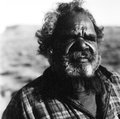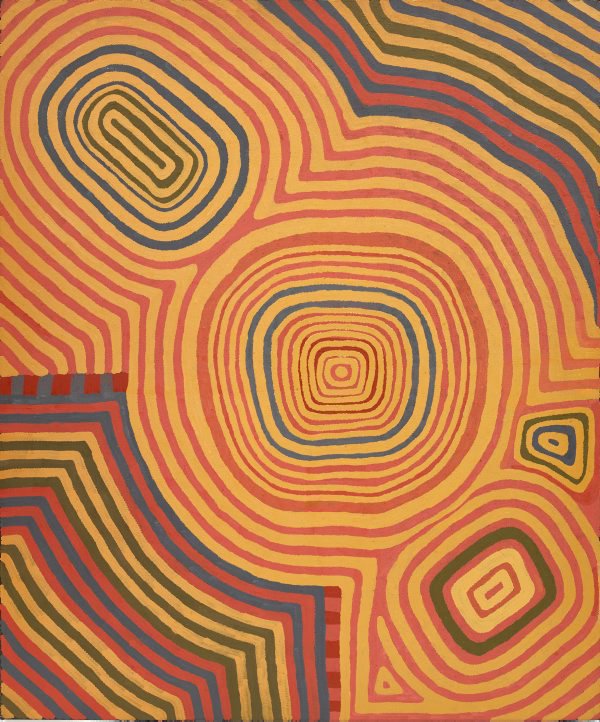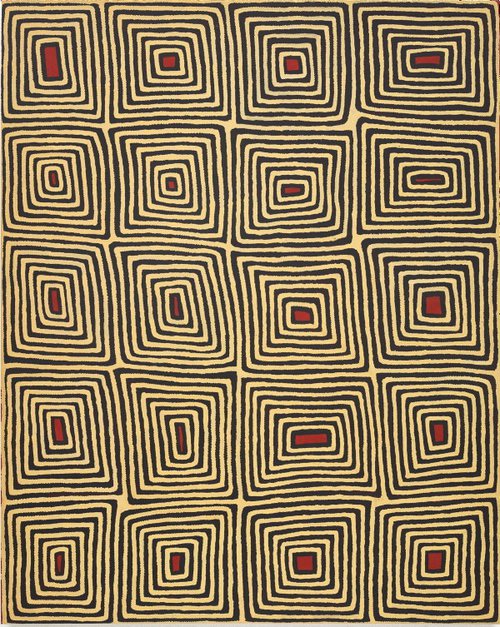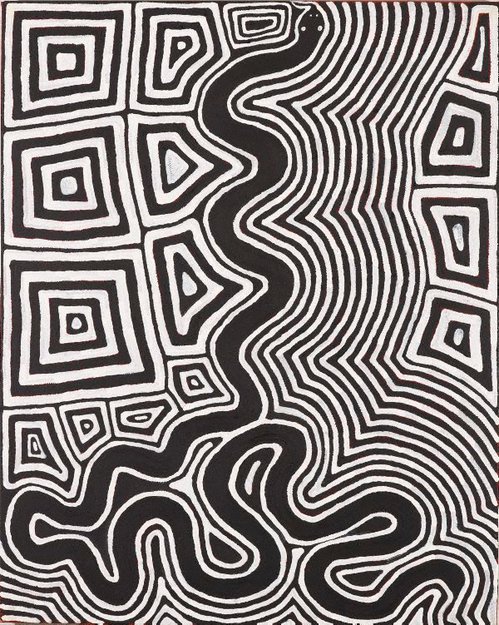Title
Untitled
1994
Artist
Ronnie Tjampitjinpa
Australia
circa 1942 – 20 Jun 2023
Language group: Pintupi, Western Desert region
-
Details
- Place where the work was made
-
Walungurru (Kintore)
→
Northern Territory
→
Australia
- Date
- 1994
- Media category
- Painting
- Materials used
- synthetic polymer paint on linen canvas
- Dimensions
- 183.0 x 152.0 cm stretcher
- Signature & date
Not signed. Not dated.
- Credit
- Purchased 1994
- Location
- Not on display
- Accession number
- 215.1994
- Copyright
- © Ronnie Tjampitjinpa. Licensed by Aboriginal Artists Agency Ltd
- Artist information
-
 Ronnie Tjampitjinpa
Ronnie Tjampitjinpa
Works in the collection
- Share
-
-
About
Ronnie Tjampitjinpa was born in Pintupi land at Muyinnga, about 100 kilometres west of the Kintore Range, just across the Western Australian border. He is the son of Uta Uta Tjangala's older brother, Minpuru Tjangala (c.1899-1976).
After his initiation into Pintupi law at the site of Yumari, Tjampitjinpa and his younger brother Smithy Zimran Tjampitjinpa walked into the Aboriginal community of Yuendumu. They later joined their parents and other siblings – who had come in to Ikuntji (Haasts Bluff) in 1956 from the Dover Hills/Yumari area – at the new settlement of Papunya. Tjampitjinpa worked as a labourer, assisting with the fencing of the aerodromes at Papunya and Ikuntji. He was one of the youngest of the group of men who began painting at the start of the Western Desert art movement in 1971, and was a founder of Papunya Tula Artists.
During the 1970s, Tjampitjinpa was preoccupied with returning to his traditional lands and became a strong advocate for the outstation movement, travelling between meetings in Papunya, Yuendumu, Wirrimanu (Balgo) and Mount Doreen Station. His goal was finally achieved with the establishment of the Walungurru (Kintore) settlement in 1981. Tjampitjinpa moved there with his young family in 1983, establishing an outstation at Ininti (Redbank) and serving as chairman of the Kintore Outstation Council. During this period, he emerged as one of Papunya Tula Artists' major painters, pioneering the bold, scaled-up, linear style that came to dominate many of the Walungurru painters' work during the 1990s. His distinctive aesthetic preoccupation is exemplified in the untitled works of 1994 and 2001. Now one of the last founding members of Papunya Tula Artists, Tjampitjinpa's career spans more than 30 years. He has had six solo exhibitions since 1989 in Australia, most recently at Utopia Art, Sydney.
Throughout the 1980s Tjampitiinpa worked devotedly on a land claim for Ininti, holding meetings in Darwin, Warmun (Turkey Creek), Utopia and many other places before finally abandoning political involvement as '... too much humbug for too long'. Tjampitjinpa now wants '... to settle down and work for myself, just painting', and resides on his outstation when not at Walungurru or in Mparntwe (Alice Springs).
Vivien Johnson in 'Tradition today: Indigenous art in Australia', Art Gallery of New South Wales, Sydney, 2004
© Art Gallery of New South Wales
-
Places
Where the work was made
Walungurru (Kintore)
-
Exhibition history
Shown in 4 exhibitions
Papunya Tula: Genesis and Genius, Art Gallery of New South Wales, Sydney, 18 Aug 2000–12 Nov 2000
The Dreamers (2009-10), Art Gallery of New South Wales, Sydney, 09 May 2009–15 Aug 2010
Remembering Forward: An Exhibition of Major Australian Indigenous Artists, Museum Ludwig, Cologne, Germany, 20 Nov 2010–20 Mar 2011
Ronnie Tjampitjinpa, Art Gallery of New South Wales, Sydney, 04 Apr 2015–01 Nov 2015
-
Bibliography
Referenced in 5 publications
-
Vivien Johnson, Tradition today: Indigenous art in Australia, 'Ronnie Tjampitjinpa', pg. 142, Sydney, 2004, 142 (colour illus.).
-
Margo Neale, Yiribana: Aboriginal and Torres Strait Islander collection, Sydney, 1994, 68, 69 (colour illus.), 138, 139. plate no. 32
-
Hetti Perkins and Hannah Fink (Editors), Papunya Tula: genesis and genius, Sydney, 2000, 127 (colour illus.), 285. no catalogue number
-
Cara Pinchbeck, Look, 'Longing for home', pg. 29-31, Sydney, May 2015, 30.
-
Falk Wolf, Remembering forward: Australian Aboriginal painting since 1960, 'Ronnie Tjampitjinpa', pg. 68-79, Cologne, 2010, 77 (colour illus.), 78. cat.no. 31
-




